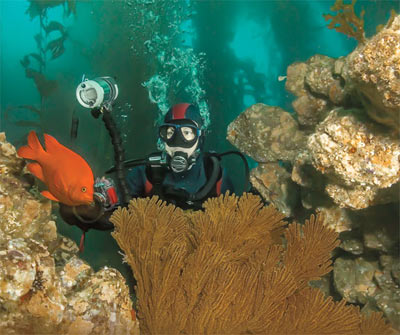Over 13 years ago a small group of dedicated conservationists gathered together to begin drafting and lobbying for the passage of the bill which would institute a comprehensive network of marine protected areas in California. It began in 1997 with a landmark agreement to provide significant protection to the abalone resource which was followed closely by the passage of the Marine Life Management Act which dealt with fisheries regulation. This was followed shortly by the passage of the Marine Life Protection Act and after almost a decade of work and debate we have now completed and finalized three fourths of the coastline.
This December the Fish and Game Commission for the state of California voted 3-2 to approve the Integrated Preferred Alternative for the South Coast region. I must admit being a bit emotionally affected after putting more than a decade into this process and had a tear in my eye as the final vote was announced. It is going to take some time to produce upgraded maps because there were 19 separate decisions made and voted on in reaching the final product which was passed. When we started the process there was almost no meaningful marine protection south of Point Conception and today, including the northern Channel Islands protections which were previously passed, we now have almost 300 square miles of marine protected areas.
I know that many of you are bitterly disappointed with the outcome. I myself am disappointed with the location and utility of the reserve complex in Orange County and am bitterly disappointed over the pitiful amount of protection we have recorded California southern offshore islands. Nonetheless, we have what we have and while it may not be up to the level of protection that we were charged by the BRTF to produce and is not what our children and grandchildren deserve, I believe this will be one of the most meaningful conservation initiatives California has enacted.
While you may not agree with the designs or the outcome, one thing you must acknowledge is that the state of California is facing dire economic consequences, including possible receivership actions by the federal government because it is unable to pay its bills and manage its resources and continues to spend us into oblivion. What this means for marine management is that we are going to enter a long period of time for which they will be inadequate enforcement protection available. Fish and game is facing significant layoffs and reduction in budgets and we are going to enter a data poor environment because we simply lack the resources to continue to gather the meaningful information we need for beneficial to management. I still believe that in the face of all these dire economic consequences that the decision to institute a network of marine protected areas will be one of the great most significant resource preservation events of our time. I fear that 20 years from now will we will be looking at empty oceans and rich reserves. I hope this does not come to pass, but if it does, the insurance provided by the implementation of the MPAs in Southern California will endure as one of our most beneficial governmental decisions.










